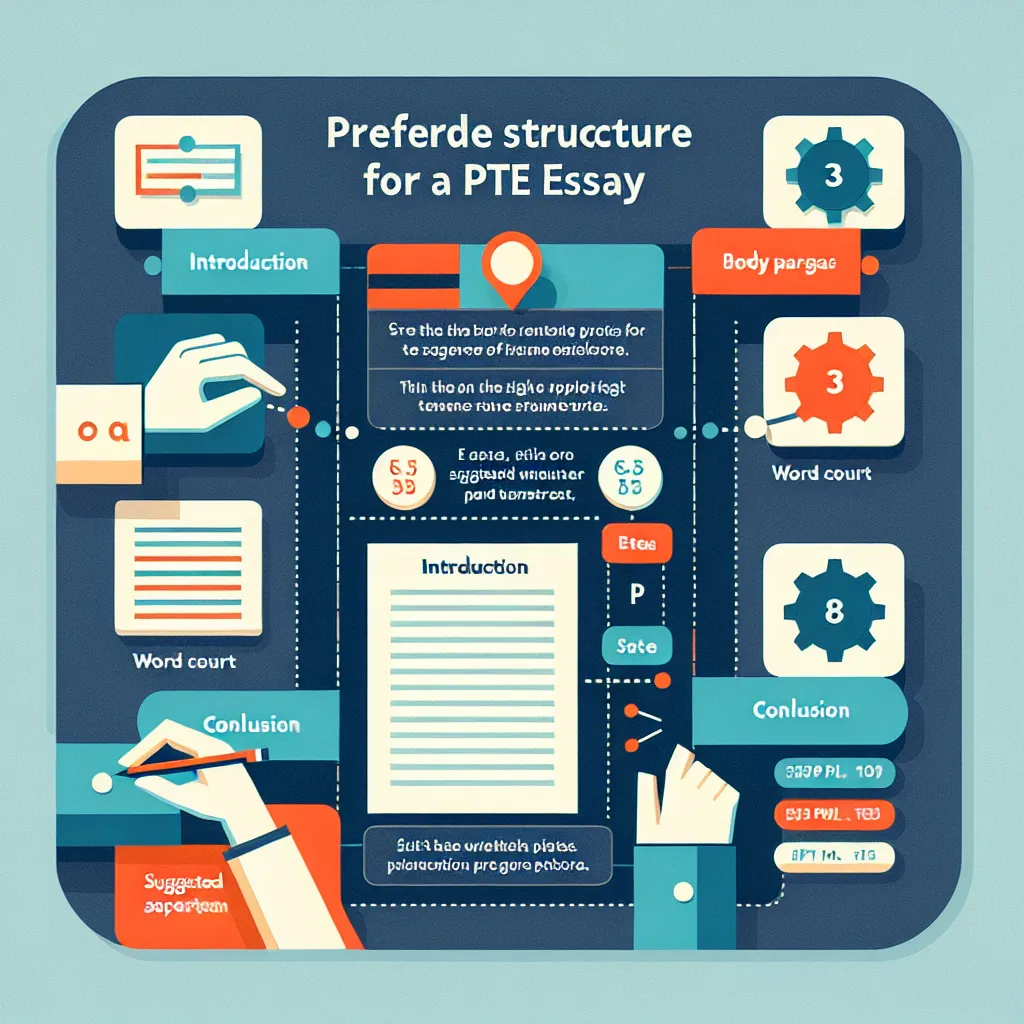Are you preparing for the PTE Academic exam and feeling overwhelmed by the essay writing task? Don’t worry! In this comprehensive guide, we’ll walk you through the process of structuring an essay for the PTE Writing exam. By following these tips and strategies, you’ll be well-equipped to tackle this challenging section with confidence.
Understanding the PTE Writing Essay Task
Before we dive into the structure, let’s quickly review what the PTE Writing essay task entails. In this section, you’ll be given a prompt and asked to write an essay of 200-300 words in 20 minutes. The essay typically requires you to express and support your opinion on a given topic.
 PTE Writing Exam Overview
PTE Writing Exam Overview
The Importance of Essay Structure in PTE Writing
A well-structured essay is crucial for success in the PTE Writing exam. Here’s why:
- Clear organization helps you convey your ideas effectively
- A logical flow improves readability and coherence
- A good structure ensures you cover all necessary elements
- It helps you manage your time efficiently
- A well-structured essay generally scores higher in the exam
Now, let’s break down the ideal essay structure for the PTE Writing exam.
The Ideal PTE Essay Structure
1. Introduction (40-50 words)
Your introduction should:
- Restate the topic in your own words
- Provide background information if necessary
- Present your thesis statement (main argument)
Example:
“The debate over whether technology has improved our lives or made them more complicated is ongoing. While there are valid arguments on both sides, I firmly believe that technology has significantly enhanced our quality of life in numerous ways.”
2. Body Paragraph 1 (70-80 words)
In this paragraph:
- Present your first main point
- Provide supporting evidence or examples
- Explain how this point relates to your thesis
Example:
“Firstly, technology has revolutionized communication, making it faster and more accessible than ever before. With smartphones and social media platforms, we can instantly connect with friends and family across the globe. This ease of communication has strengthened relationships and fostered global understanding, demonstrating how technology has positively impacted our lives.”
3. Body Paragraph 2 (70-80 words)
In this paragraph:
- Present your second main point
- Provide supporting evidence or examples
- Explain how this point relates to your thesis
Example:
“Moreover, technological advancements in healthcare have significantly improved our quality of life. From advanced diagnostic tools to revolutionary treatments, technology has enabled medical professionals to save more lives and improve patient outcomes. For instance, telemedicine has made healthcare accessible to remote areas, further illustrating the positive impact of technology on our well-being.”
4. Conclusion (40-50 words)
Your conclusion should:
- Summarize your main points
- Restate your thesis in light of the evidence presented
- Provide a final thought or call to action
Example:
“In conclusion, while technology may present some challenges, its benefits in communication and healthcare clearly outweigh the drawbacks. As we continue to harness technological innovations, it’s evident that our lives will only improve further in the future.”
 PTE Essay Structure Diagram
PTE Essay Structure Diagram
Key Tips for Structuring Your PTE Essay
- Plan before writing: Spend 2-3 minutes outlining your essay structure and main points.
- Use clear topic sentences: Start each paragraph with a clear statement of the main idea.
- Employ transition words: Use words like “firstly,” “moreover,” and “in conclusion” to improve flow.
- Maintain coherence: Ensure each paragraph logically follows from the previous one.
- Balance your paragraphs: Aim for roughly equal length in your body paragraphs.
- Stay within the word limit: Practice writing essays within the 200-300 word range.
Common Pitfalls to Avoid
- Ignoring the prompt: Always address the specific question or topic given.
- Writing too much: Stick to the word limit to avoid losing points.
- Neglecting examples: Always support your points with relevant examples or evidence.
- Poor time management: Practice writing timed essays to improve your speed.
- Weak conclusion: Don’t introduce new ideas in your conclusion; summarize and conclude effectively.
Practice Makes Perfect
Remember, mastering essay structure takes practice. Here are some steps to improve your skills:
- Analyze sample essays to understand effective structures
- Practice writing essays on various topics using the structure outlined above
- Time yourself to ensure you can complete the essay within 20 minutes
- Get feedback from a teacher or study partner on your essay structure
- Review official PTE scoring criteria to understand what examiners are looking for
By following this guide and practicing regularly, you’ll be well on your way to structuring effective essays for the PTE Writing exam. Remember to stay focused, manage your time wisely, and always address the prompt directly. Good luck with your PTE preparation!
[internal_links]




